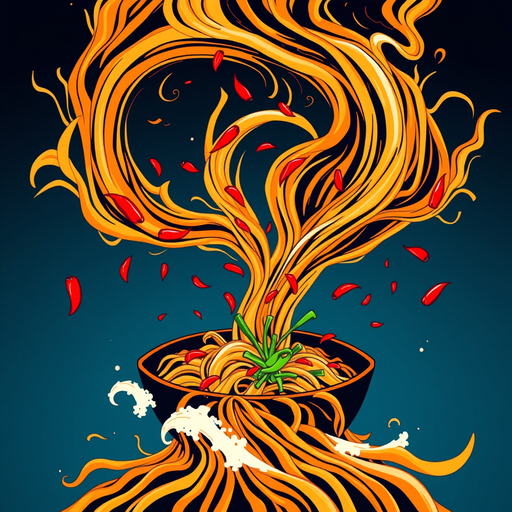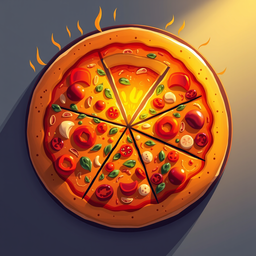Ramen delivers engineered, multi-layered umami that hits deep and lingers.
At its best, ramen is culinary architecture: a base broth, a focused tare, and a fragrant aroma oil working in concert rather than competing. Those layers concentrate synergistic umami—from glutamate (kombu, miso) to inosinate (pork, chicken) and guanylate (shiitake)—so the flavor swells rather than shouts. That structure holds whether the bowl is feather-light shio or marrow-rich tonkotsu, giving ramen remarkable clarity amid intensity. The result is a finish that stays with you, not just a fleeting sip of comfort.
Alkaline wheat noodles give ramen unmatched chew, spring, and sauce-carrying power.
Kansui (alkaline salts) changes the dough’s pH, creating that golden hue and resilient bite that doesn’t turn flabby in hot broth. Makers tune thickness, curl, and hydration to match specific soups—fine, straight strands for delicate shio; thick, wavy ribbons for miso or tonkotsu—so every slurp is calibrated. The noodles wick broth and oil while aerating aroma with each pull, amplifying flavor without extra salt. Texturally, it’s choreography: firm noodles, tender chashu, crisp negi, and a molten ajitama playing counterpoint.
Ramen is a flexible canvas that suits every mood, season, and dietary lane.
From clean shoyu to smoky miso to peppery tantanmen, ramen spans the spectrum without losing its identity. It thrives hot or cold—piping bowls in winter, tsukemen or hiyashi chuka when the weather turns—and welcomes lean proteins, extra greens, or fully plant-based broths. The toppings are dials, not decorations: nori for oceanic lift, sesame for nuttiness, yuzu for brightness. Whether it’s a quick weeknight fix or a chef’s tasting bowl, ramen adjusts to you rather than forcing you into a mold.
Ramen’s global adoption and accolades prove its enduring appeal.
Global consumers slurp over 100 billion servings of instant noodles annually (per the World Instant Noodles Association), and ramen remains one of the category’s most recognizable and beloved formats—a strong signal of staying power. On the high end, ramen-ya like Tsuta (the first to earn a Michelin star in 2015) and Nakiryu have received Michelin recognition, validating ramen as serious cuisine. From Tokyo to New York and London, dedicated ramen counters pack out nightly, and ramen festivals draw massive, hungry crowds. It’s the rare comfort food that thrives as both street staple and destination dining.













